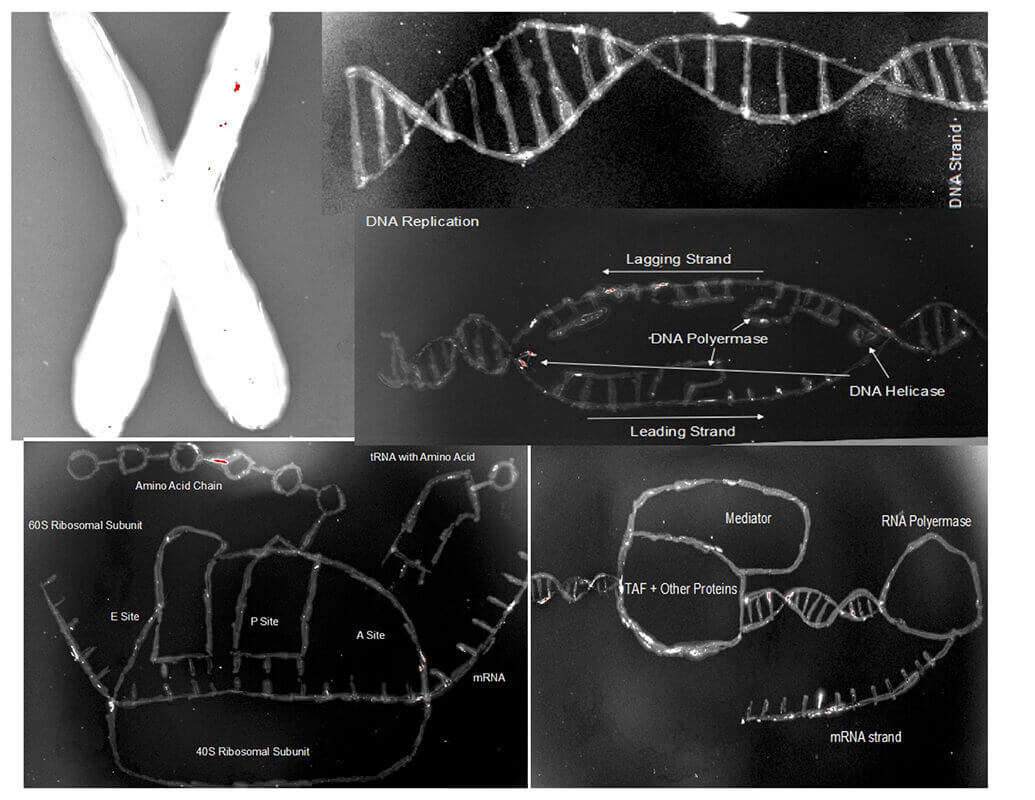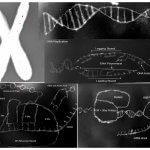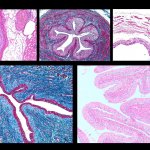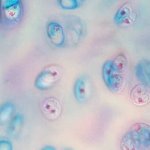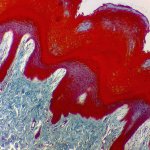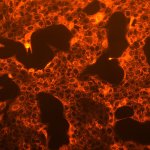When students opted to take honors cell biology in spring 2017, they didn’t know the class would include an art project.
Associate Professor of Biology Laurel Rodgers, Ph.D., who teaches the course every other year, said the course needed an interdisciplinary element, in order to meet the requirements of the proposed honors program. As a result, Dr. Rodgers, who minored in studio art as an undergraduate, gave her students an open-ended project – to produce artwork representing some aspect of cell biology.
Her students created everything from paintings of a cell membrane and a papier-mache representation of a neuron to watercolors of cell types and tissues and enhanced photos.
Biology major/chemistry minor Dillon Richardson ’18 used strawberry DNA as his medium. “I came up with the idea of painting with DNA because I wanted to do a blend of art and science, specifically genetics, because that is what I hope to work with and study in the future. I also thought it would be cool to paint pictures of DNA and some of the cellular processes involving DNA with DNA!” Richardson said. “I executed my project by isolating strawberry DNA. I then concentrated and purified the DNA. The higher the concentration of DNA, the brighter it will be on my canvas. I then mixed the DNA with a chemical called SybrSafe. SybrSafe is a chemical that binds to DNA and lights when exposed to blue light; the DNA would emit green light. Using a paintbrush, I painted the DNA onto my ‘canvas,’ which was blotting paper. I painted on the lightly sketched pencil marks on the blotting paper (the pencil marks do not show up in the imaging process). Blotting paper is used to transfer nucleic acids/proteins from agarose/PAGE gels to the blotting paper itself to visualize nucleic acids and proteins more easily. I then used a special imaging machine to take a picture to expose the DNA!”
Rodgers said the imagining machine Richardson mentioned is located in the Health & Life Sciences Building.
“They definitely went above and beyond,” said Rodgers, who then displayed her students’ artwork at April’s Student Project and Research (SUpr) Summit. “I wanted everyone to see what they had created.”
Through the project, she wanted students to see how art and science intersect, and the beauty that can be found when they cross paths. “I don’t think any subject lives in a bubble,” she added.
“I think I learned patience from creating art in ‘honors cell,’” said Richardson, who is doing a summer research internship at the Ohio State University this summer. “It took me several attempts (over the span of two weeks) to actually get my idea to work. It then took about another week to paint the five pieces. It helped me visualize the process and gave me a sense of the bigger picture of what is happening.”
Rodgers said she hopes that as more honors courses are developed, faculty will be creative in helping students explore connections between disciplines. She’s deeply impressed with the works her students produced. “I love them,” she said.
Featured image is “Double Knockout” by Jordon Edlund. It shows cells that have had the genes for two important proteins “knocked out”. This means that these proteins, ZO-1 and ZO-2, are no longer expressed. ZO-1 and ZO-2 are essential components in tight junctions, which attach to actin in order to form between cells and regulate what passes between them. This image shows the location of mitochondria in red, these structures are responsible for the production of energy within the cell. These images were taken using fluorescent microscopy.
